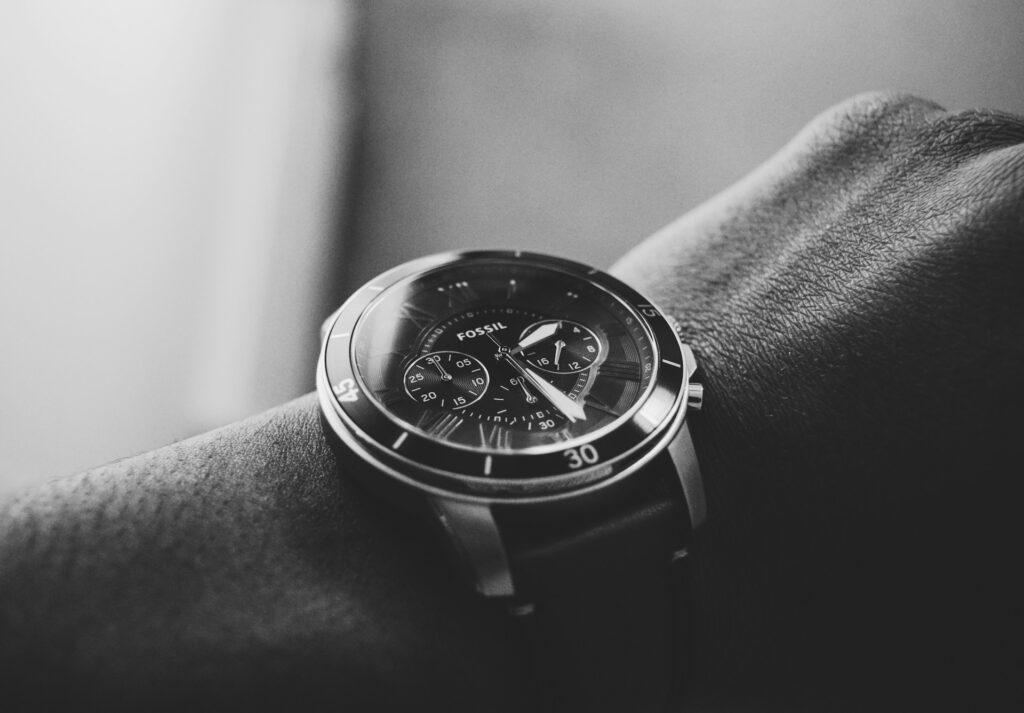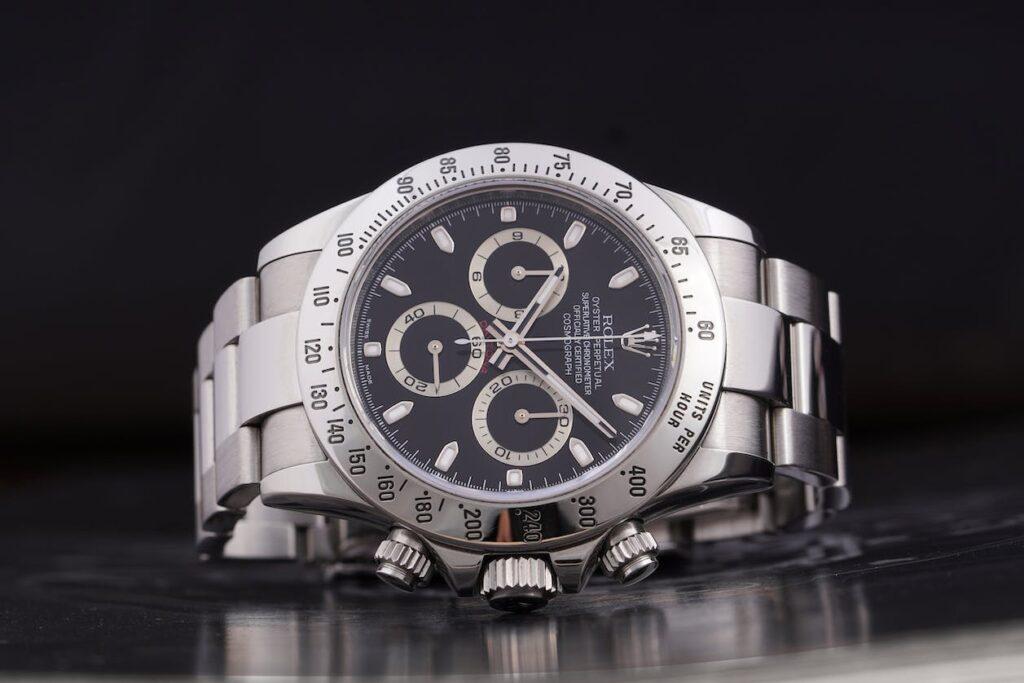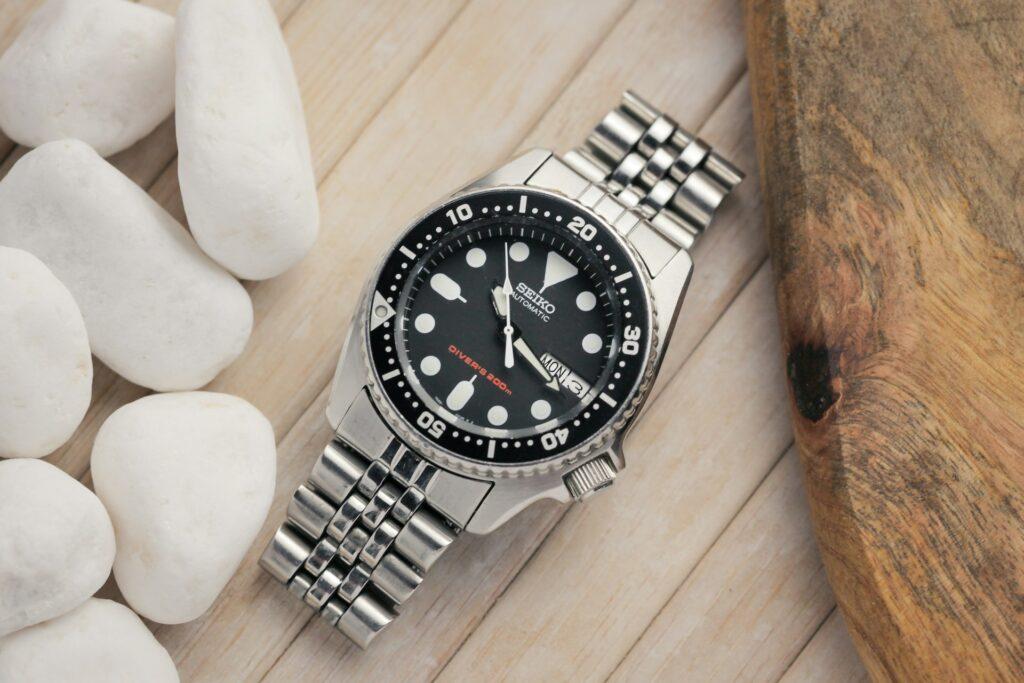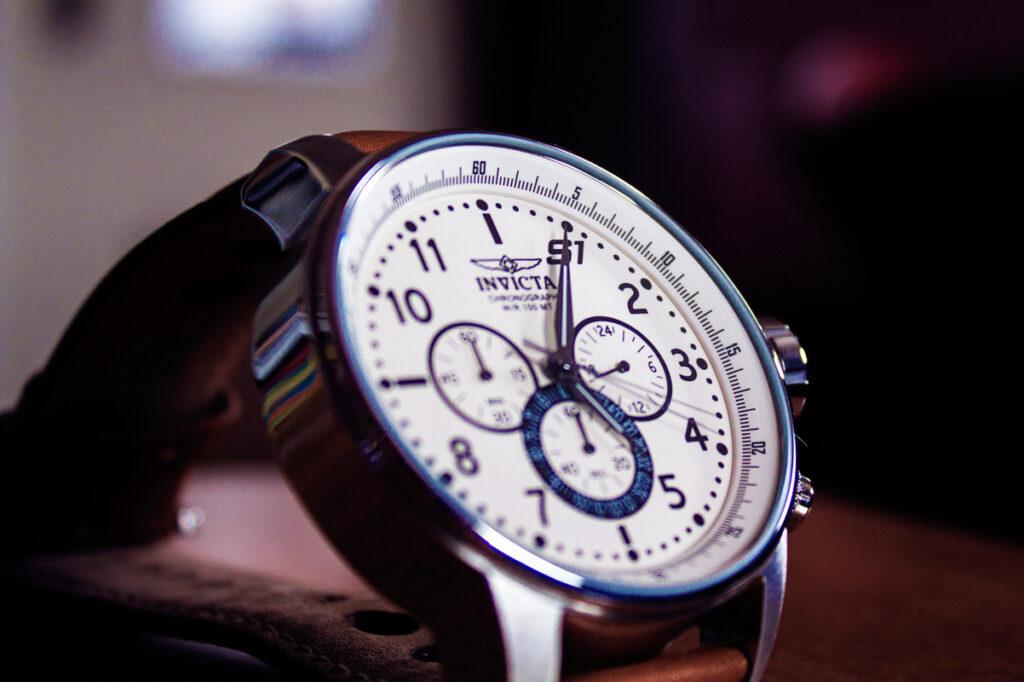Watch Crystal Types: A Beginner’s Guide
When it comes to watches, the crystal—the transparent cover protecting the dial—is more important part than you might think. It’s not just about keeping dust and scratches at bay; the type of crystal can affect your watch’s durability, clarity, and overall vibe. From classic everyday wear to rugged adventures, the crystal you choose matters more than you’d expect.
In this guide, we’ll break down the main watch crystal types—acrylic, mineral, and sapphire—and discuss how they compare in terms of strength, scratch resistance, and affordability. But that’s not all. We’ll also explore some proprietary options like Seiko’s Hardlex and Invicta’s Flame Fusion, which bring unique qualities to the table. Whether you’re picking out your first watch or just curious about the tech behind the timepiece, this guide has something for you. So, without further ado, let’s get started!
Contents
Understanding Watch Crystals: The Window to Your Watch
Think of a watch crystal as the windshield of your timepiece. Just like car windshields, some materials handle impacts better than others, and the quality directly affects what you see through them.
A watch crystal serves two primary functions: protecting the delicate watch hands and dial from dust, moisture, and impacts while providing clear visibility to read the time. The crystal type you choose affects durability, clarity, and maintenance requirements for years to come.
Here’s what makes crystal selection tricky: there’s no universal “best” option. The perfect crystal depends on how you’ll use your watch, your budget, and what trade-offs you’re willing to make. A construction worker needs different crystal properties than someone who only wears their watch to dinner parties.
The evolution from basic glass to modern synthetic materials has given us three distinct crystal types, each engineered for specific situations. Understanding these differences helps you match the right protection to your needs rather than paying for features you don’t need or skimping on protection you do need.
The Three Main Types of Watch Crystals
There are three main types of crystals usually used in watches:
- Acrylic Crystals
- Mineral Crystals
- Sapphire Crystals
1. Acrylic Crystals
Acrylic crystal, plexiglass, and hexalite are all names for the same material called Polymethyl methacrylate (PMMA). It is a thermoplastic and is the least expensive type of watch crystal. If you’re on the hunt for an entry-level, low-cost, or kids’ watch, chances are you’ll find an acrylic crystal gracing the face. These crystals are a go-to choice for affordable watch brands looking to keep manufacturing costs down while still delivering a decent level of protection.

Acrylic crystal is rated three out of ten on the Mohs Scale (which measures the hardness and scratch resistance of minerals). Because of its softness, it is easily scratched. However, minor scratches may be buffed out.
One of the standout qualities acrylic is its flexibility and impact resistance. These crystals can bend and flex without shattering, making them ideal for sports watches or timepieces prone to the occasional knock or drop. And if you do happen to scratch or damage an acrylic crystal, replacement is usually a breeze and easy on the wallet.
Pros
- Incredibly affordable, keeping manufacturing costs low
- Excellent impact resistance and shatter-proof
- Minor scratches can often be buffed out
- It is lighter than mineral and sapphire crystals.
- Can be molded into various shapes, including the classic domed design
Cons
- Prone to scratches due to its relatively soft nature
- Can develop a hazy appearance over time
- Not the best choice for dress watches or formal occasions due to its plastic look
2. Mineral Crystal
Mineral crystal is the most commonly used crystal in mid-range watches. Often referred to as “hardlex” in watchmaking circles, these crystals are pretty much the same as the crown glasses you’re used to seeing daily, such as in windows, picture frames, and other such items.

The Mohs Scale gives the mineral crystal a rating of 5 out of 10. It can remain clean and clear for a long time if properly cared for.
Pros
- Offers improved scratch resistance compared to acrylic crystals
- Cost-effective and still reasonably priced for most budgets
- Surface-level scratches can often be buffed out
- Maintains clarity and visibility over an extended period
Cons
- Less shatter-resistant than acrylic, unable to withstand severe impacts
- Does not offer the same level of scratch resistance as premium sapphire crystals
- Can be susceptible to glare and reflections without an anti-reflective coating
Speaking of coatings, many watchmakers opt to equip their mineral crystals with an AR (anti-reflective) treatment. This clever addition helps minimize light reflection on the watch face, improving visibility and making it easier to read in bright conditions.
3. Sapphire Crystals
Sapphire crystal is the most expensive type of watch crystal that is commonly used in high-end and expensive watches. It is the third hardest mineral on the Mohs scale, with a rating of 9, after diamond and moissanite. This means you don’t need to worry about it getting scratched because it can only be scratched by materials with greater hardness.

Most watchmakers today use synthetic sapphire, a lab-grown material that offers the same impressive properties as natural sapphire but at a much lower cost. Synthetic sapphire was first created in 1911 by French chemist Auguste Verneuil, and it has since become the standard for high-quality watch crystals. Rest assured, synthetic sapphire is virtually identical to its natural counterpart in terms of strength and clarity.
While sapphire crystal is highly scratch-resistant, it’s worth noting that it’s not impervious to damage. It lacks impact resistance, meaning it can shatter if hit hard enough. So, while sapphire is great for keeping scratches at bay, a little extra care can go a long way in avoiding cracks or breaks.
Pros
- Unmatched scratch resistance
- Exceptional clarity and brilliance, enhancing the watch’s overall look
- Lends a luxurious, high-end appearance to any timepiece
- Synthetic production keeps costs more manageable than natural sapphire
Cons
- More expensive than acrylic and mineral crystals
- Vulnerable to shattering under heavy impact
Brand-Specific Watch Crystal Types
1. Hardlex Crystals (Seiko’s Proprietary)
Hardlex crystals are a type of tempered mineral crystal developed by Seiko, designed to offer greater resistance to scratches and impacts compared to standard mineral crystals.

The tempering process enhances the hardness of the material, making it a durable choice for everyday wear. While the exact method is proprietary, Hardlex is widely regarded as a tougher alternative to regular mineral crystal, bridging the gap between affordability and durability.
Pros
- Excellent durability and impact resistance
- Highly resistant to scratches
- Affordable and cost-effective
- Maintains clarity and visibility over an extended period
Cons
- Not as scratch-resistant as sapphire crystals
- Limited availability (proprietary to Seiko watches)
2. Flame Fusion Crystals (Invicta’s Proprietary)
Invicta introduced Flame Fusion crystals as a solution to combine the durability of sapphire with the unique properties of mineral crystals. This process involves fusing synthetic sapphire and mineral crystals together using intense heat, creating a crystal that offers exceptional scratch resistance and superior clarity.

Pros
- Excellent scratch resistance (close to sapphire)
- Superior clarity and brilliance
- Affordable and cost-effective alternative to pure sapphire crystals
- Highly durable and resistant to shattering
Cons
- Limited availability (proprietary to Invicta watches)
- May not offer the same level of scratch resistance as pure sapphire crystals
Simple Ways to Identify Your Watch Crystal Type
You don’t need special tools to determine your current watch crystal type. These practical identification methods work for most watches.
The sound test: Gently tap the crystal with your fingernail. Acrylic produces a dull, muffled sound. Mineral glass creates a sharper, more resonant tone. Sapphire generates the clearest, most bell-like sound due to its density and hardness.
Visual inspection: Look at the crystal edges under good lighting. Acrylic edges often appear slightly rounded or beveled. Mineral glass typically has sharper, more defined edges. Sapphire crystals frequently feature perfectly crisp edges with an anti-reflective coating creating a subtle blue or purple tint.
Reflection quality: Hold your watch at different angles under room lighting. Acrylic shows noticeable reflections and might appear slightly cloudy. Mineral glass reflects clearly but noticeably. Sapphire, especially with anti-reflective coating, appears almost invisible – reflections seem to disappear.
Weight consideration: Sapphire adds noticeable weight compared to other crystals. If your watch feels substantial for its size, sapphire crystal might be the reason.
Check existing scratches: Examine the crystal surface closely. Heavy scratching suggests acrylic or possibly low-quality mineral glass. Light scratches indicate mineral glass. An almost perfect surface after months or years of wear points toward sapphire.
When uncertain, check the manufacturer’s specifications online or consult a local watchmaker. Most reputable brands clearly state crystal types in their technical specifications.
How to Choose the Perfect Watch Crystal Type
For workplace and daily use: Mineral crystal emerges as the smart choice for most people. Office environments, commuting, and normal social activities rarely damage mineral glass, while the optical clarity keeps your watch looking professional. The moderate cost makes sense for watches you’ll wear frequently.
For active and high-risk lifestyles: If you work in construction, play contact sports, or have young children who might grab your watch, acrylic crystal’s impact resistance becomes invaluable. The ability to absorb impacts without creating dangerous glass shards makes acrylic the practical choice when breakage risk runs high.
For special occasions and luxury pieces: Sapphire crystal delivers the premium experience that matches formal events and high-end timepieces. The perfect clarity and virtually scratch-proof surface maintain that “like new” appearance that special occasion watches demand.
Budget considerations shape crystal decisions significantly. Acrylic crystals offer the most affordable protection, making them perfect for first watches or backup timepieces. Sapphire crystals command premium prices but provide long-term value through durability and maintained watch value.
Prioritize features that matter most to your situation: Scratch resistance matters for daily wear, impact resistance protects against accidents, and optical clarity enhances readability and appearance. Determine which features align with your actual usage patterns rather than theoretical scenarios.
Watch Crystal Myths
Several persistent myths about watch crystals lead buyers toward poor decisions or unrealistic expectations.
“Sapphire crystals are unbreakable” – False. While incredibly scratch-resistant, sapphire can still chip or shatter from severe impacts. The hardness that prevents scratches makes sapphire somewhat brittle under extreme force.
“Acrylic crystals are always inferior” – Not true. For vintage watches, historical accuracy, and situations where impact resistance matters more than scratch resistance, acrylic often proves superior.
“All luxury watches use sapphire” – Mostly true today, but some luxury brands still use mineral glass for specific models, especially tool watches designed for extreme conditions where sapphire’s brittleness might pose problems.
“Crystal type doesn’t affect watch value” – Completely false. Crystal type significantly impacts both durability and perceived quality. Watches with damaged crystals lose substantial value, while pristine crystals maintain or enhance worth.
These myths often stem from incomplete information or outdated assumptions about crystal technology and manufacturing costs.
FAQ
Natural sapphire crystals are mined from the earth, while synthetic sapphire crystals are created in a laboratory setting. Synthetic sapphire has virtually identical properties to natural sapphire but is more affordable for use in watchmaking.
Use a soft, lint-free cloth and a mild soap solution or specialized crystal cleaner. Avoid abrasives and harsh chemicals, as they can scratch or damage the surface. Handle the watch with care and store it properly when not in use.
There’s no set timeframe, as it depends on the crystal type, usage, and level of damage or scratches. Monitor your watch crystal’s condition and consult a professional watchmaker if you notice significant scratches, cracks, or haziness.
Not necessarily. While sapphire crystals offer superior scratch resistance, they may not be the best choice for all situations. Factors like budget, intended usage, and personal preferences should also be considered when selecting a watch crystal.
Usually yes, but costs often exceed the watch’s value except for premium pieces. Upgrading requires complete disassembly, and finding properly sized sapphire crystals can be challenging for older or uncommon watches.
Mineral glass offers the ideal balance for beginners. It provides good protection without the premium cost of sapphire while offering better durability than acrylic. Most respected entry-level mechanical watches use mineral glass.